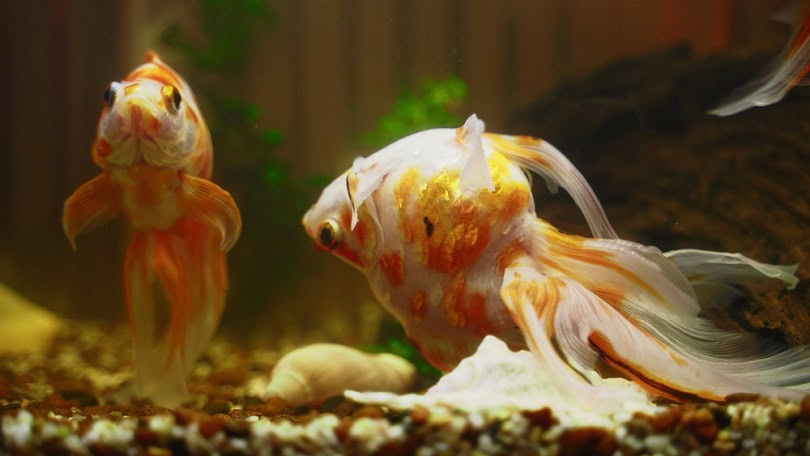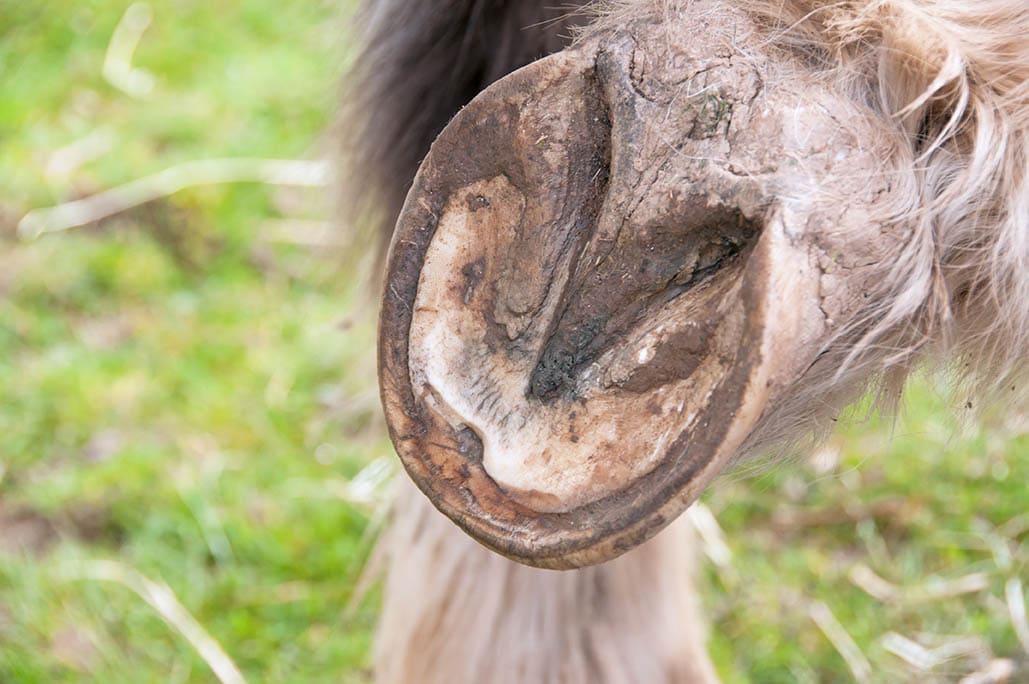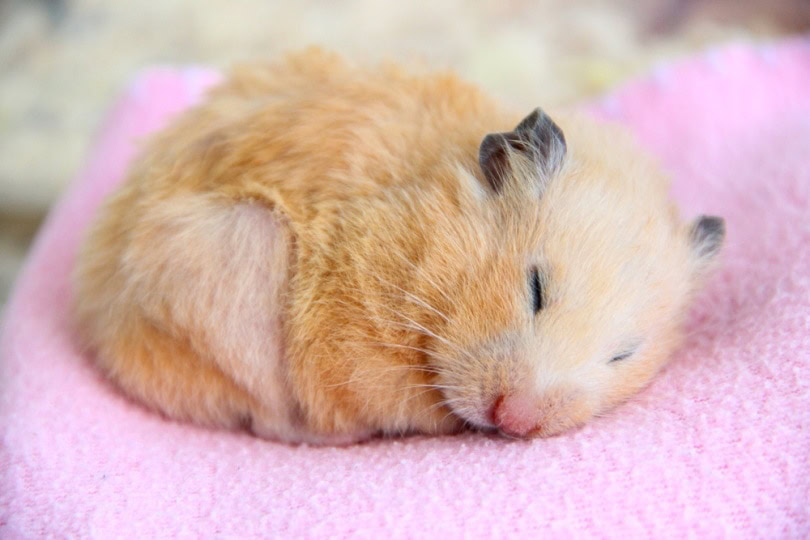VET APPROVED

The information is current and up-to-date in accordance with the latest veterinarian research.
Learn more »Goldfish are among the most popular freshwater fish available. Many different varieties, from common to fancy, are kept as pets. These are generally hardy and healthy fish that are quite active in an aquarium. So, when they start swimming abnormally or even upside down, it is a cause for concern.
Let’s look at the six common reasons that your goldfish might be swimming upside down.

The 6 Reasons Why Your Goldfish Is Swimming Upside Down
1. Swim Bladder Issues
The most common reason for goldfish to swim upside down is swim bladder issues. A goldfish has a swim bladder organ that they use to maintain buoyancy in the water. It also enables them to move in the water, so when there is a problem with it, your goldfish will start to swim upside down or abnormally. They will have difficulty moving in the water and struggle to stop themselves from sinking or floating. It is also known as swim bladder disease or disorder, though it isn’t necessarily a disease itself.
Swim bladder issues are often seen in fancy goldfish since they have compressed bodies and limited space in their coelomic cavities. If you overfeed fancy goldfish, their enlarged stomachs can put even more pressure on their swim bladder, which may result in buoyancy issues. Usually, goldfish experience swim bladder issues when the water quality is poor (such as high ammonia and nitrites). However, infections or injuries to their swim bladder can also cause problems. Some goldfish are predisposed to swim bladder issues from birth.
Certain extreme fancy goldfish body modifications have impacted their swim bladders from birth, so they might struggle with buoyancy issues throughout their lives.
2. Ammonia Poisoning
- Lethargy
- Black burns on fins and scales
- Labored breathing
- Lack of appetite
- Difficulty swimming
Goldfish are continuously producing waste in their water, and alongside their food, this causes waste to build up in the water. Ammonia is the waste product from their poop, urea, and food. In a well-established aquarium with good biological filtration, ammonia will be processed into nitrites and finally, nitrates, the less toxic form.
Goldfish generally have a high bioload and produce a lot of waste. This is one of the reasons that they need good filtration and spacious fish tanks. In a new, overcrowded, uncycled, or poorly maintained aquarium, ammonia can become a serious problem for goldfish.
Slight traces of ammonia can be detected by a liquid testing kit. The safest level of ammonia for goldfish is 0 ppm, as it can be dangerous for goldfish. They can start to show signs of ammonia poisoning, which is often fatal without immediate treatment. In severe cases, the ammonia in the water can burn your goldfish from both the inside and outside. This is incredibly damaging to their internal organs and gills, causing your goldfish to appear listless and struggle with buoyancy in the water.
In severe cases, the ammonia burns on their fins and scales can affect their ability to swim upright.
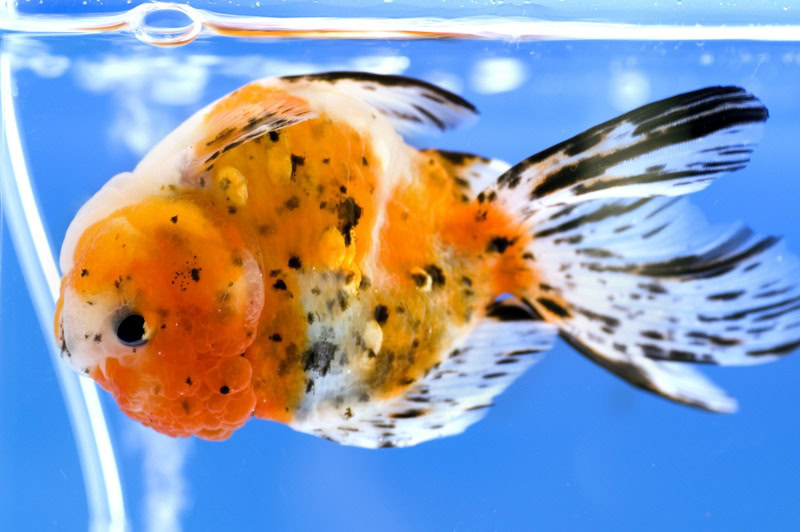
3. Nitrite Poisoning
- Rapid breathing
- No appetite
- Lethargy
- Browning gills
- Difficulty swimming
- Lying upside down at the bottom of the aquarium
- Red streaks in fins
Just like ammonia, nitrite is toxic to goldfish. Nitrite levels usually rise during an ammonia spike. High levels of nitrite in the water may cause methemoglobinemia in goldfish, which affects the way the protein (hemoglobin) in a goldfish’s red blood cells carry oxygen to their tissue.
This is often fatal to goldfish and can alter the way they swim and breathe. If a goldfish is suffering from nitrite poisoning, you will notice that they have difficulty swimming upright or normally, and their gills may develop a brownish coloration.
The safest level of nitrite for goldfish is 0 ppm, and signs of toxicity usually occur in concentrations as low as 0.75 ppm.
4. Nitrate Poisoning
- Disorientation
- Erratic swimming
- Lethargy
- No appetite
- Difficulty swimming
- C-shaped body
Although nitrate is the less toxic byproduct of the nitrogen cycle, it is still harmful to goldfish at high levels. Goldfish generally tolerate around 20 ppm of nitrate in the water before showing signs of toxicity. Most water nitrates are diluted during water changes or used by live aquarium plants. However, nitrates can still negatively affect goldfish in several ways.
A goldfish who is suffering from nitrate poisoning will experience disorientation and difficulty swimming. Their bodies usually form an upside-down “C” shape, which is a distinctive sign of high nitrates in the water.

5. Low Oxygen
Oxygen is incredibly important for goldfish, even in an aquatic environment. They rely on oxygen for basic survival. When the oxygen is low in the aquarium or your goldfish has a disease that affects their gills, they will struggle to get enough oxygen. Warm water in a tank generally holds less dissolved oxygen, which can cause your goldfish to start gasping at the surface. Also, any infections that affect goldfish gills will affect how they breathe underwater.
In severe cases where a goldfish isn’t receiving enough oxygen, their swimming behavior will be compromised. Your fish might appear listless at the bottom of the aquarium, or they will float upside down near the surface. If the water quality is good, low oxygen levels might be a problem. This is especially true if the water is warmer than usual and there is no aeration system.
6. Fin Rot or Injuries
Fish use their fins to swim and stabilize themselves in the water. If their fins have been damaged from a disease or injury, they will have difficulty maintaining an upright swimming position. This can cause them to swim upside down or sideways or struggle to swim at all. After your goldfish has been treated for any diseases or injuries that affect their fins, it can take a while for the fins to regrow. The regrowth will look semi-transparent and slightly whiter than their usual fins.
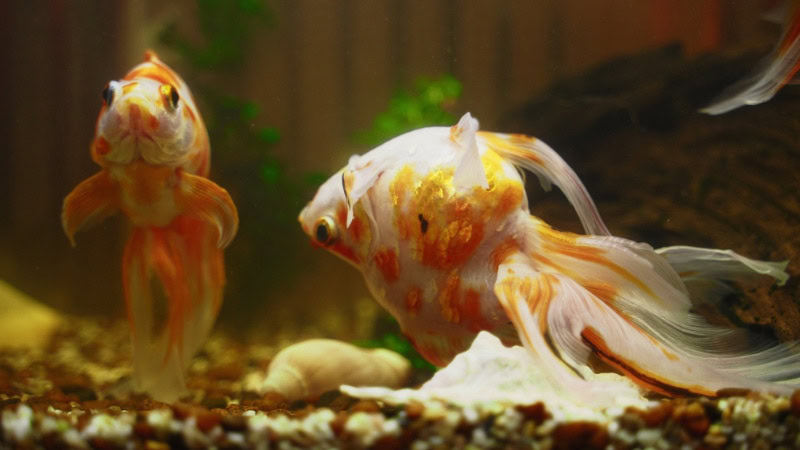

How Can You Help an Upside-Down Goldfish?
The first step to correcting your goldfish’s upside-down swimming behavior is to determine the main cause. Have you recently overfed your fancy goldfish or skipped a water change? Is the water quality poor from overfeeding or overcrowding? These are important questions to answer if your goldfish has started swimming upside down.
Test the Water
The water parameters (ammonia, nitrite, and nitrate levels) are not visible in an aquarium. You will need to use a liquid water testing kit to get an accurate reading. The test will help you determine what parameters are an issue in the water. Allowing their aquarium to undergo the nitrogen cycle ensures that there is an establishment of beneficial bacteria to convert their waste properly.
If any of the levels are above the ideal amount, water changes can help dilute them. You can also use ammonia-neutralizing products formulated for freshwater aquariums.
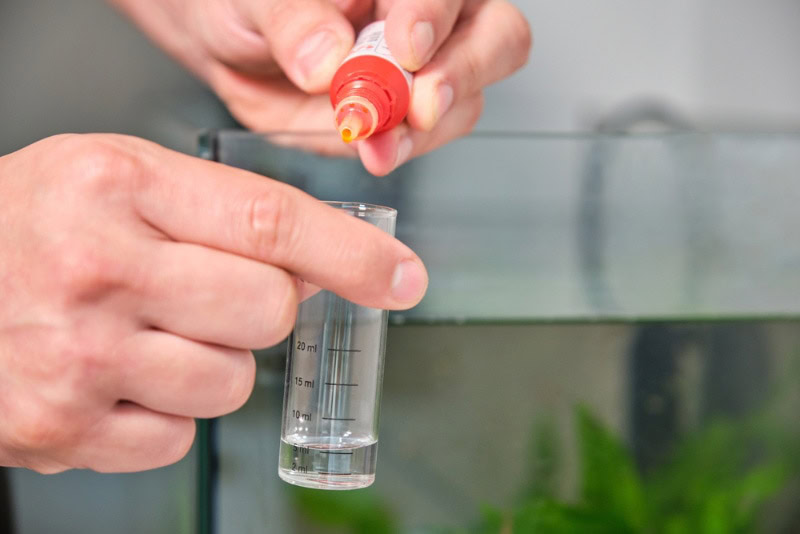
Consider Their Feeding Habits
Overfeeding your goldfish is not recommended, especially for fancy goldfish that already have compressed bodies. You might find that your fancy goldfish become “floaty” after a large meal, which indicates that they might be eating too much at once. You should ideally feed these fish small meals once or twice a day and only as much as they can eat within 3 to 5 minutes.
Lower the Water Temperature
Goldfish are temperate water fish that can handle slightly warm and cold water. However, water that is too warm can affect their oxygen intake and cause a range of problems. Gradually lowering the water temperature and aerating the water can increase the amount of dissolved oxygen.
Add an Aeration System
Surface agitation, whether it’s from a filter’s spray bar or a bubbler, is going to help aerate the water. This ensures that there is enough gaseous exchange happening at the surface while increasing the dissolved oxygen in the water.
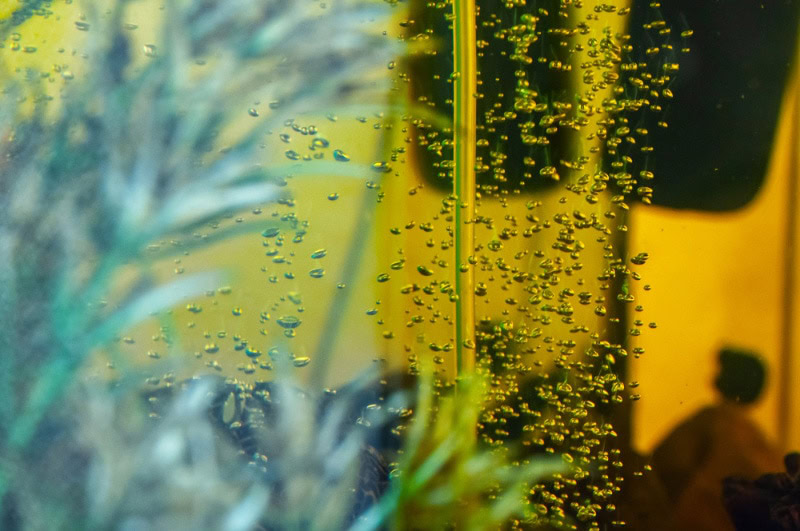
Do Frequent Partial Water Changes
When your goldfish is experiencing problems from poor water quality, water changes are incredibly beneficial. You can do frequent partial water changes to your goldfish aquarium every day in situations where the ammonia, nitrite, or nitrate levels are high. In severe cases, a 30% to 50% water change might be necessary every 4 hours. Using a siphon can help suction out waste products that have accumulated in the substrate, which would contribute to water quality issues.
Treat Your Goldfish for Diseases
Many diseases and infections that affect goldfish can influence their swimming patterns. After you have determined the type of disease your goldfish is experiencing, you can begin treating them with medication. It is probably best to move the sick goldfish into a separate tank for treatment so the medication does not spoil their original aquarium water. Their treatment tank should have an aeration system and clean water.
It can take a few days or weeks before your goldfish is fully healed and their swimming behaviors return to normal.

Conclusion
Swim bladder issues are the most common reason for goldfish to swim upside down. This abnormal behavior can also be caused by poor water quality, fin injuries, or even low oxygen levels.
Usually, an upside-down goldfish can make a full recovery with proper treatment and necessary environmental changes. In some cases, goldfish with a compromised swim bladder may have difficulty swimming normally again. It is common for fancy goldfish to experience recurring buoyancy issues that make them swim upside down, typically after a meal or infection. If that is the case, you will need to regularly maintain their aquarium and monitor their feeding habits to prevent their swim bladder issues from returning.
- See also: How Big Do Black Moor Goldfish Get?
Featured Image Credit: M-Production, Shutterstock
Contents
- The 6 Reasons Why Your Goldfish Is Swimming Upside Down
- 1. Swim Bladder Issues
- 2. Ammonia Poisoning
- 3. Nitrite Poisoning
- 4. Nitrate Poisoning
- 5. Low Oxygen
- 6. Fin Rot or Injuries
- How Can You Help an Upside-Down Goldfish?
- Test the Water
- Consider Their Feeding Habits
- Lower the Water Temperature
- Add an Aeration System
- Do Frequent Partial Water Changes
- Treat Your Goldfish for Diseases
- Conclusion
